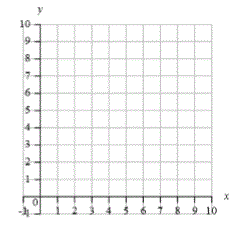6.) Problem type: Working a problem backwards
Problem:
A chocolate bar is separated into several equal pieces. If one person eats 1/4 of the
pieces, and a second person eats 1/2 of the remaining pieces, then there are six pieces
left over. Into how many pieces was the original bar divided?
|
Solution:
1. If the second person ate half the remaining pieces and 6 were left, then there were ____ pieces before he ate his half.
2. If the first person ate 1/4th of the bar, then that person left ____ of the bar.
3. That fraction of the bar is what the second person got.
4. The bar was separated into ____ pieces.
|
7). Problem type: Turning words into equations:
Problem:
Trina, who is 10, wants to know how old her mother is. Her mother says two times the
difference between our ages is the same as the sum of our ages plus 14 more. How old is her mom?
|
Solution:
Use T for Trina and M for Mom.
1. Write the expression for "2 times the difference in our ages" =
_____________________.
2. Write the expression for "the sum of our ages +14".
_______________________
3. Set these two expressions equal to each other and solve
M = _____
|
8). Problem type: Cartesian coordinates
Problem:
A square has three vertices (1,3), (7, 1) and (9, 7).
What is the fourth vertex?

|
Solution:
1. Plot the 3 points on the provided graph.
2. Find the offset from the 2nd point (7,1) to the 3rd point (9,7).
(Subtract the 2nd point's x and y coordinates from the 3rds)
Offset = (___,___).
3. Apply this offset to the 1st point (1,3) to get the 4th point = (___,___).
|